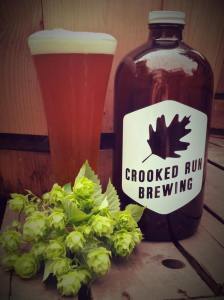
IPA just went to 33% of total craft beer share. That’s up from 25% a few years ago.
Back in 2013, I was 25 years old–fresh-faced and younger, and with plenty of room between the ears. I was excited to bring some new styles to people’s palates. Our flagship beer was going to be a Belgian single, and we were going to open people’s minds to older styles. Now people are debating whether flagships are dead, and whether IPA’s pervasiveness is leaving other styles either dead or over-hopped.
I don’t think either is the case. We still want to have three flagship beers at our new brewery, with lots of rotating, non-hoppy styles. But two of those three year-round beers are IPAs, and Belgian single isn’t among them. What changed?
First, I love all beer styles, but it’s without a doubt that IPA rules. Three years ago, I didn’t think that not only would IPA remain firmly in place, but it would expand so far beyond the bounds of what anyone would think is possible. The traditional west coast IPA, with firm bittering and grapefruit hops, is here to stay. For years, the east coast was in the shadow of these beers.
However, in the subsequent years, the east coast style of IPA has now taken the spotlight, to the point that breweries that do the style right regularly sell out of cans on a weekly basis. These juicy, super dry-hopped IPAs are pretty low on IBUs in comparison, but a massive amount of late-addition hops keep these beers from being considered anything close to sweet.
Brewing beer is my sole source of income, and I will make anything that sells well. I don’t think anyone can argue that we have made some interesting and risky beers: cherry cayenne IPA, hibiscus saison, our range of adjunct beers using local produce and sour brett beers. I am not certain, but I think we were the first brewery to make a black tripel. We’ll continue to offer some great non-hoppy styles.
Over our time in business, however, we’ve moved away from trying to get people on to traditional English and German styles. Our new year-round beer, Verdant Force, is a juicy double IPA, made with a staggering amount of proprietary hops. It’s a great beer in that vein, and the feedback has been very positive. I was initially excited to get people to try some really great traditional beer styles, but the love just wasn’t there. We still make a nice traditional English bitter and a Vienna lager, but over time, we’ve axed a lot of traditional beers we used to make. Does this mean there is no room for these beers?
Absolutely not. The beer market in northern Virginia is not very mature. In other places I have visited, there is room for small breweries that totally kill it on non-hoppy styles. Not only do they brew these beers well, they do great sales. If you’re in a city with dozens of breweries, you can carve out a niche doing great traditional styles. One of my favorite breweries in Denver, Hogshead, just nails it with English style and cask ales.
Let’s not forget national sales. Hype in craft beer is not indicative of what really moves. Allagash White. Oberon. Many breweries, us included, do a year-round kolsch. With the limited distribution we have done, Red Kolsch has been the easiest beer to move.
Furthermore, more bars are popping up with a heavy focus on European imports. Old becomes new once again, as many Americans have never had a chance to try some pretty incredible beers being made in Europe.
